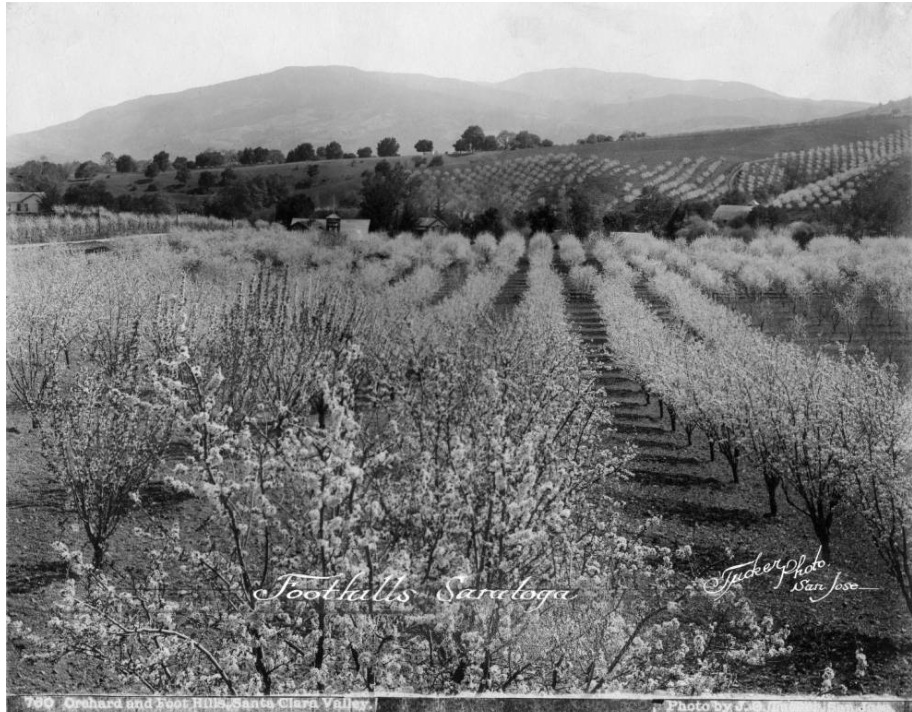Apricot Orchards In Silicon Valley
The history of the work done on these orchards begins with the arrival of European immigrants who ventured to California when they heard the news about the gold rush. When they arrived, they realized the many other great resources California had to offer, including the rich soil which was great for agriculture and harvesting a lot of produce. Many of these families, particularly immigrants from Italy, worked on farms and started their own businesses growing produce to sell, helping the agricultural economy as well as their own family stay on their feet. Although many of these orchards are gone today due to Silicon Valley’s new image of the home of many technological advancements, there are still a few orchards that remain, including Novakovich orchard, located in Saratoga, which grows and sells fresh apricots. This orchard not only takes advantage of Silicon Valley’s rich soil and great weather for crops, but remembers the history of Silicon Valley and continues to hold onto those roots.
The remembrance of the orchards, specifically apricot orchards, is important to me because of my familys’ direct relationship with agriculture in the Silicon Valley. When my great-grandfather and great-grandmother came to the United States from Florence, Italy, they arrived in the Santa Clara Valley. After my grandmother and her siblings were born here in California, they started work in the agricultural realm by working on an apricot orchard. Selling their products helped them to stay economically stable and support one another. My father grew up on their apricot ranch, and worked from a young age picking apricots and laying them out on trays to dry. He has told me many stories from his childhood about the hard work it took to pick the apricots in the beating sun, cut them open, and lay them out onthe large trays. He tells me stories of how he would sometimes spend the night in a trailer on the ranch with his brother. He has also shown me many photos of the ranch with its abundance of apricot trees, as well as his father and other family members working on the ranch. I have also visited the ranch before, although there are no longer any trees to harvest from. However, visiting the ranch, which his family owns, is interesting as it shows the layout of the trees as well as the many artifacts that have been left behind, including farming equipment and old tractors.
In Santa Clara Valley, now referred to as Silicon Valley, orchards were planted by missionary fathers during the mid-18th century. By the end of World War I, 79,000 acres in Santa Clara Valley were orchards. During the 1930’s and 1940’s, the valley was known as “The Valley of Heart’s Delight,” as the economy thrived on the production of fruit (Guadalupe River Park Conservancy). Many of these orchards were contributed to by Italian American immigrants who used their agricultural knowledge to better the fruits they grew.
As Robin Chapman, author of the book California Apricots, writes: “If Silicon Valley ever invents a time machine…it would be fascinating to set the dial for the top of Mount Hamilton in the spring of 1950. Six hundred thousand of the valley’s acres, or almost two-thirds of the land, was in agriculture then… the traveler would see millions of fruit trees blooming in the valley below” (109). In Chapman’s book on the vast orchards that covered Silicon Valley as well as the influence apricots had, she emphasizes the greatness of the orchards, which are almost completely gone today. This greatness would be a wonderful sight for the human eye to see standing atop a mountain. The work put into these beautiful fields is attributed mostly to Italian Americans, and Chapman hopes to spotlight the importance of the work to Silicon Valley. Even though Silicon Valley has turned into the largest business capital in the world with most of the orchards being replaced with buildings, the fruit trees planted in the rich soil contained under these buildings are attributed to Silicon Valley’s success. Without those beautiful orchards, Silicon Valley would not have flourished into a highly functioning business capital, as the openness and cheapness of the land provided by the orchards created space for new business beginnings. Thus, it is important to recognize the history of Silicon Valley and not just view its contributions to business, but its involvement in the agricultural industry as well. The film Italian-Americans in California documents the life of Italian American workers in the fields. The film includes interviews with those who had a parent in the field, as they tell the experience of how their work was valued.
Credit: Sophia Sordello
